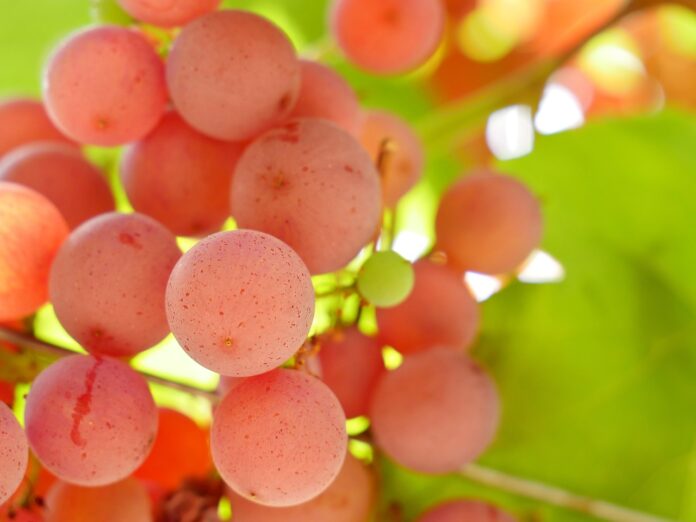Juicy and delicious, grapes are popular in many countries, though they prefer to grow in warm, but not too hot, climates. Grapes are used to make a variety of beverages, most notably wine, but they are also widely used in cooking, serving as an important ingredient in numerous desserts. In fact, there are far more grape varieties than what you see on store shelves, as many of them are not exported beyond their growing regions.
Facts About Grapes:
- In modern-day Belarus, archaeologists discovered bronze vessels adorned with images of grapevines, indicating that these berries were known to the locals as far back as the Bronze Age. However, grapes never grew there due to the climate being too cold for them.
- France ranks first in the world for grape production.
- Grape leaves, like the berries, are widely used in cooking. They are sometimes used as a substitute for cabbage in dishes like stuffed grape leaves.
- The size to which a grapevine can grow directly depends on the climate. In southern Russia, vines typically reach 2-3 meters (6.5-10 feet), but on the sunny Mediterranean coast, they can grow as long as 30-40 meters (98-131 feet).
- Grapes usually contain 1 to 4 seeds, although there are seedless varieties. For obvious reasons, seedless varieties cannot reproduce on their own without human assistance.
- It is known that grapevines can live up to 150 years, but in the modern world, this is nearly impossible. In 1863, phylloxera insects, which feed on grape roots, were accidentally introduced to Europe from North America, causing immense damage to the grape industry.
- Some grape varieties are used for decorative purposes—the climbing green shoots beautifully adorn gardens and building walls.
- Dried grapes are known as raisins.
- By-products of the winemaking industry are used to produce not only natural dyes but also other necessary substances, such as tar.
- Grape seeds are used to produce fatty oils, both for culinary and technical purposes.
- Tartaric acid, widely used in the food industry and known as food additive E334, is derived from grape leaves and shoots.
- The world’s oldest grapevine still grows and bears fruit in Maribor, Slovenia.
- Grapes are an unofficial symbol of Armenia.
- There are currently an estimated 10,000 to 20,000 different grape varieties in the world, with new ones constantly being developed.
- Some ancient coins from different states featured images of grape clusters.
- During the anti-alcohol campaign in the Soviet Union, spearheaded by Gorbachev and lasting about two years, a large number of vineyards were destroyed.
- Planting parsley under grapevines helps them stay healthier and more fruitful, as parsley protects the vines from insect pests.
- It takes about 600 grapes to make one bottle of wine.
- Grapes and grape products have a good choleretic effect and are used in treating liver diseases.
- All grape varieties are generally divided into four groups—white, red, black, and pink.
- In general, dark grape varieties contain more beneficial substances than light ones.
- The whitish film on fresh grapes, which resembles fuzz, is actually made up of colonies of millions of microorganisms.
- Grape skins contain more beneficial substances than the pulp.
- It is known that people in ancient Egypt were cultivating grapes as far back as 8,000 years ago.
- The asteroid Vinifera, discovered in 1913, was named after the grape. In Latin, “vinifera” means “grape.”
